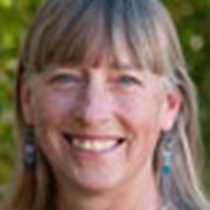During breakfast, we descended the flight of five locks at Fort Augustus and set out on our transit of Loch Ness, the largest body of inland water in the British Isles. It is deeper than any part of the North Sea between Scotland and Denmark. Midway across the loch is Urquhart Castle, strategically situated on a promontory where a Pictish chieftain held sway at the time of St. Columba.
Crossing through the Great Glen on a mission to take Christianity to the pagan lands to the east, here Columba found that he needed the help of an interpreter as he moved from the Gaelic-speaking world of the Dalriada to the lands of the Picts to the east. It was also here that Columba performed a remarkable miracle, bidding a monster to retreat to the depths of the loch—the first recorded sighting of Nessie, now much in evidence as a souvenir around Loch Ness. The site at Urquhart became a Norman stronghold, continuously occupied through the centuries, until destroyed by the government before it could fall into the hands of the Jacobites.
That afternoon, we went to the award-winning visitor center at the site of the final defeat of the Jacobites at the Battle of Culloden in 1746. This was the last armed civil conflict on British soil. For centuries since the Reformation of the 1530s, landowners who had benefitted from the confiscation of the monastic estates supported a Protestant monarchy, and they looked askance at any Catholic tendencies in succeeding monarchs who might threaten the Protestant land settlement. Protestant monarchs had been imported—William of Orange for example—to displace the “rightful” monarch, James II of England (James VII of Scotland), who was exiled to France for his Catholic leanings. When the last of the Stuarts, Queen Anne, passed away at the beginning of the 18th century, a new German dynasty was imported from Hanover to preserve the Protestant succession. This was widely resented in Scotland, especially in the Gaelic-speaking northwest of the country, where people remained loyal to the Catholic faith through the years of Reformation.
In 1715, when the first Hanoverian king George 1 arrived in Britain, supporters loyal to James (Jacobus in Latin) rose in a rebellion quickly crushed. When George II came to the throne, a second Jacobite rebellion took place from 1745-6 under the romantic leadership of Bonnie Prince Charlie. Upon landing in Scotland, he was advised to return home to France, and he is reputed to have replied, “I have arrived home!” His highlander army reached as far south as Derby, within striking distance of London, before falling back to Scotland for the battle at Culloden, a desolate area of boggy ground not far from Inverness. Following Culloden, the forces of the crown determined to rid Scotland of treacherous Catholic Gaels. The Gaelic language and clan system were proscribed, the playing of the bagpipes outlawed, and wholesale forcible eviction and emigration ensued in a process known as the Highland Clearances.
Our afternoon was rounded off with a visit to Clava Cairns, a late Neolithic/early Bronze Age site consisting of chambered cairns and megalithic stone circles featured in The Outlander series.
A festive evening saw haggis served in traditional style with a Highland piper in attendance and Rabbie Burns’ “Address to the Haggis” splendidly recited by the hotel manager. Following dinner, there was a performance of local dance in the lounge, a fitting celebration of a memorable week in the Scottish Highlands.









